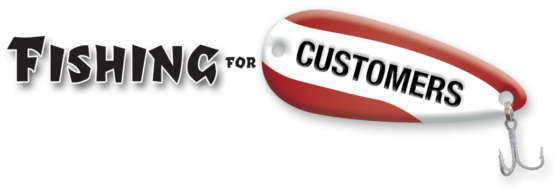It’s an old folk saying. “Familiarity breeds contempt.”
It’s a warning that we can learn too much about each other, and not like what we find.
But, what marketer wouldn’t go to excessive lengths to create more and more familiarity with his company? After all, the more a potential customer thinks about a company, the more likely she is to ultimately buy from that company, isn’t she?
Assuming a salient message, yes.
Evidence indicates that when no one has a obviously superior product, customers tend to buy from the company most familiar to them.
Market share tends to equal share of mind.
This kind of advertising is used by brand builders, and is known as top-of-mind-awareness. The strategy? Constantly remind people of what the company can do for them, then wait patiently for them to need what the company offers.
We call those customers relational. They’re most interested in doing business with companies they trust not to take advantage of them. Marketers hope to build brand recognition with relational customers because it eventually can lead to a long series of purchases from that customer. Brand building doesn’t insist on a sale today, but rather builds awareness today for sales tomorrow.
Then there is the other school of marketing.
Direct marketers also build brands, as evidenced by successful companies like Land’s End, or Eddie Bauer. But though their customers can be every bit as loyal, direct marketers aren’t willing to wait for “someday” to acquire those customers. They aren’t interested in the value of “getting their name out there.” They want the cash register to ring, now.
Direct marketers study the numbers, and adjust tactics to gain minor fractions of advantage.
Direct marketers use call-to-action ads, and assume each time the ad is run, the phone must ring. If the phone doesn’t ring, the ad is a failure. Direct marketers know that every dollar they spend has got to return more than a dollar, and they measure to know exactly how much more.
To make that phone ring, direct marketers primarily target transactional shoppers – shoppers who are simply looking for a great deal today.
A direct marketer closely watches the costs of customer acquisition, so he can stop sending those relatively expensive mailings to people who don’t respond to his offer. The individuals on his “list” either react in the first, second, or fifth mailing (whatever his cost ceiling) or they’re dropped from the list and they don’t hear from him again.
But mass media can’t offer that kind of selectivity.
You can’t change the physics of television broadcasting to prevent the people who didn’t buy from being exposed to your ad again. You can’t block the view of the billboard only when non-purchasers drive by (and by the nature of the medium the cost of customer acquisition wouldn’t change, anyway).
Which is why direct marketers don’t often use mass media. They consider those non-buyers to be “wasted circulation.”
And that’s a shame, because mass media provides great opportunities to cost effectively reach those transactional buyers. Of course, the same mass media provide great opportunities to cost effectively reach relational buyers.
And eventually someone always asks, “Can’t we design an ad to appeal to both transactional and relational buyers?”
No. We can’t.
No ad can successfully appeal to two opposite purchase motives. The right thing to say to one is exactly the wrong thing to say to the other.
Which prompts today’s question.
On those rare occasions when a direct marketer uses mass media to attract transactional buyers, is it possible to achieve top-of-mind-awareness, too?
Humm.
Yes. Yes it is. A lot depends on how long those ads continue to run.
Here’s why.
Take an attorney. Call him, oh… call him “Hammering Henry.” Henry traditionally screams into the tube “I’ll fight hard to get you the money you deserve for your pain and suffering. Call me now.”
Henry buys massive amounts of gross rating points. Henry is also the only lawyer advertising on television in his market.
Over a period of time, when Henry’s ad is heavily repeated and no one else bothers to put any message on TV, who are accident victims likely to call? Which name is top-of-their-collective-minds?
It’s Henry.
Henry isn’t screaming at the camera in order to build the Henry brand. He’s simply doing his best to make the phone ring. He’s telling people who’ve had an accident to pick up the phone and call him NOW.
But, over the months and years that he continues to advertise, how many other names will the average driver remember?
By default Henry IS top-of-mind.
Sometimes there will be a medium that none of your competitors advertises in.
That medium could be the local television station. It could also be the local church bulletin. The medium could be a radio station or an outdoor sign company, then again, it could be a thirty second video running before the feature attraction at the local Cineplex.
Assuming a salient message, if a specific targeted audience is exposed to that ad over and over and over, and no competitors bother to respond, a strictly transactional ad could capture the attention of, and be remembered by, relational buyers as well.
Of course, as soon as competitors start advertising in the same medium, that natural advantage disappears. At that point, more than one solution comes to mind, all shoppers will respond to whichever ad which most closely addresses their needs.
But to a small advertiser with minimal competition, this strategy of being the only advertiser in a business category using a particular medium, could be worth considering.
